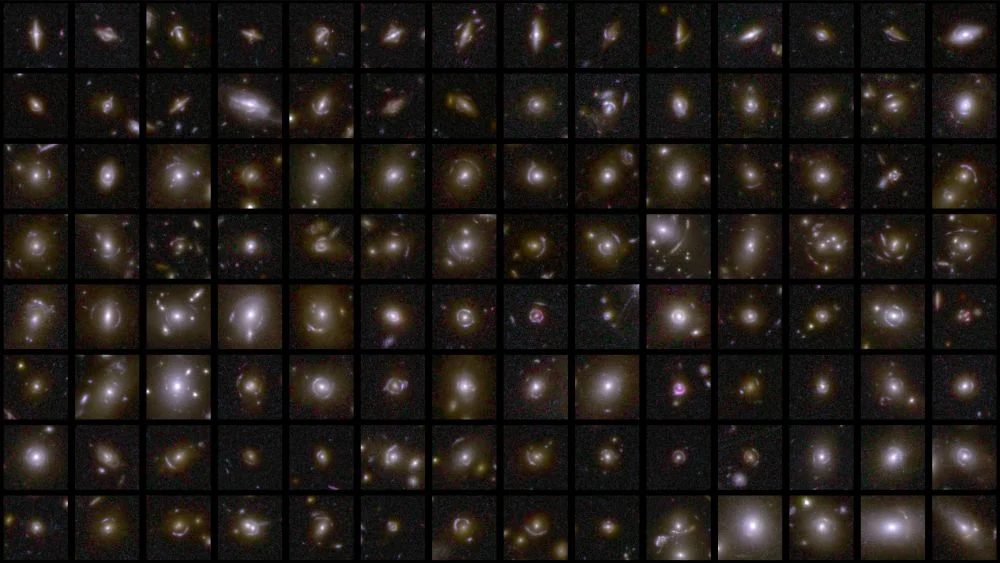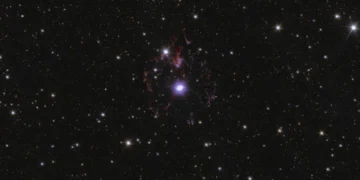The universe has always been a vast expanse of mystery, beckoning humanity to explore its depths and uncover its secrets. In this quest, the European Space Agency’s (ESA) Euclid Space Telescope has emerged as a pivotal instrument, aiming to shed light on some of the most profound enigmas of the cosmos.
Euclid’s Mission: Charting the Dark Universe
Launched in July 2023, the Euclid Space Telescope is designed to explore the “dark universe,” focusing on two elusive components: dark matter and dark energy. These constituents are believed to comprise about 95% of the universe’s total mass-energy content, yet they remain largely undetected and poorly understood. Euclid’s primary objective is to map the large-scale structure of the universe across space and time, thereby elucidating the roles of dark matter and dark energy in cosmic evolution.

To accomplish this, Euclid employs a 1.2-meter diameter telescope equipped with two scientific instruments: the Visible Imaging Channel (VIS) and the Near-Infrared Spectrometer and Photometer (NISP). These instruments enable Euclid to capture high-resolution images and spectra of billions of galaxies, extending up to 10 billion light-years away. Over its six-year mission, Euclid aims to survey more than one-third of the sky, creating an unprecedented 3D map of the universe that spans both space and time.
First Deep Field Observations: A Treasure Trove of Galaxies
In March 2025, Euclid released its first batch of survey data, including a preview of its deep fields. These observations unveiled hundreds of thousands of galaxies of varying shapes and sizes, providing a glimpse into their large-scale organization within the cosmic web.
Among the notable findings from these initial observations is the discovery of over 500 strong gravitational lensing events. Gravitational lensing occurs when the gravitational field of a massive object, such as a galaxy cluster, warps the fabric of space-time, bending the light from more distant objects and magnifying them. This phenomenon not only provides a natural “cosmic telescope” for observing distant galaxies but also offers critical insights into the distribution of dark matter, which influences the lensing effect.
Scientific Implications: Probing Dark Matter and Dark Energy
The data gathered from Euclid’s deep field observations hold profound implications for our understanding of dark matter and dark energy. By analyzing the distribution and shapes of galaxies, scientists can infer the underlying distribution of dark matter, which exerts gravitational forces that influence galaxy formation and clustering. This information is crucial for testing and refining cosmological models that describe the universe’s large-scale structure.
Moreover, Euclid’s observations will aid in studying the effects of dark energy, the mysterious force driving the accelerated expansion of the universe. By mapping the spatial distribution of galaxies and galaxy clusters over time, Euclid will help determine how dark energy has influenced cosmic expansion throughout the universe’s history. This, in turn, could lead to a deeper understanding of the fundamental physics governing dark energy.
Comparison with Previous Missions: Advancing Cosmic Cartography
Euclid’s mission builds upon the legacy of previous space telescopes, such as the Hubble Space Telescope, but with distinct advancements. While Hubble provided detailed images of individual galaxies and deep fields, its narrow field of view limited its ability to survey large portions of the sky. In contrast, Euclid is designed for wide-field imaging, enabling it to cover more than one-third of the sky with high-resolution observations.
Additionally, Euclid’s capability to observe in both visible and near-infrared wavelengths allows it to detect galaxies at various stages of their evolution, including those whose light has been redshifted due to the universe’s expansion. This dual-wavelength approach enhances Euclid’s ability to construct a comprehensive 3D map of the universe, surpassing the capabilities of its predecessors.
Future Prospects: Unraveling Cosmic Mysteries
The initial deep field observations are just the beginning of Euclid’s ambitious mission. Over the next six years, Euclid will conduct extensive surveys, continually refining our understanding of the universe’s structure and the nature of dark matter and dark energy. The vast amount of data collected will be made publicly available, enabling scientists worldwide to conduct independent analyses and pursue new research avenues.
Furthermore, Euclid’s findings are expected to complement other cosmological studies and missions. For instance, combining Euclid’s data with observations from the James Webb Space Telescope (JWST) could provide deeper insights into galaxy formation and evolution. Such collaborations will enhance our ability to test theoretical models and potentially lead to new physics beyond the current standard model.
Euclid’s Contribution to Understanding the Cosmic Web
One of Euclid’s key contributions lies in mapping the cosmic web—the large-scale structure of the universe consisting of interconnected filaments of galaxies, clusters, and dark matter. This web-like structure traces the evolution of the universe from the early days of cosmic formation to its current state. By observing how galaxies are arranged along these filaments, scientists can better understand the underlying gravitational forces shaping the cosmos.
The telescope’s deep-field imaging capabilities allow for the observation of galaxy clusters in different stages of evolution. This enables astronomers to trace the lifecycle of galaxies from their birth in early cosmic structures to their role in shaping the universe’s current framework.
Revolutionizing the Search for Dark Matter and Dark Energy
Dark matter remains one of the biggest mysteries in astrophysics. While it does not emit light or interact with electromagnetic forces, its gravitational influence shapes galaxies and cosmic structures. Euclid’s survey will help refine our models of how dark matter is distributed throughout the universe.
Dark energy, on the other hand, is responsible for the accelerated expansion of the universe. Understanding its properties requires tracking cosmic expansion over billions of years.
Impact on Cosmology and Future Discoveries
Euclid’s mission is expected to redefine modern cosmology. With its unprecedented wide-field imaging, it will allow researchers to measure cosmic structures with greater accuracy, leading to new breakthroughs in our understanding of fundamental physics.
Its data will not only serve current scientists but will also provide a rich dataset for future generations. As new technologies and analytical tools emerge, Euclid’s observations will continue to yield discoveries long after its primary mission ends.
Conclusion: A New Era in Cosmology
Euclid’s first deep field observations mark a significant milestone in our quest to understand the universe’s most profound mysteries. By providing an unprecedented view of the cosmos, Euclid is poised to revolutionize our knowledge of dark matter, dark energy, and the large-scale structure of the universe.



















